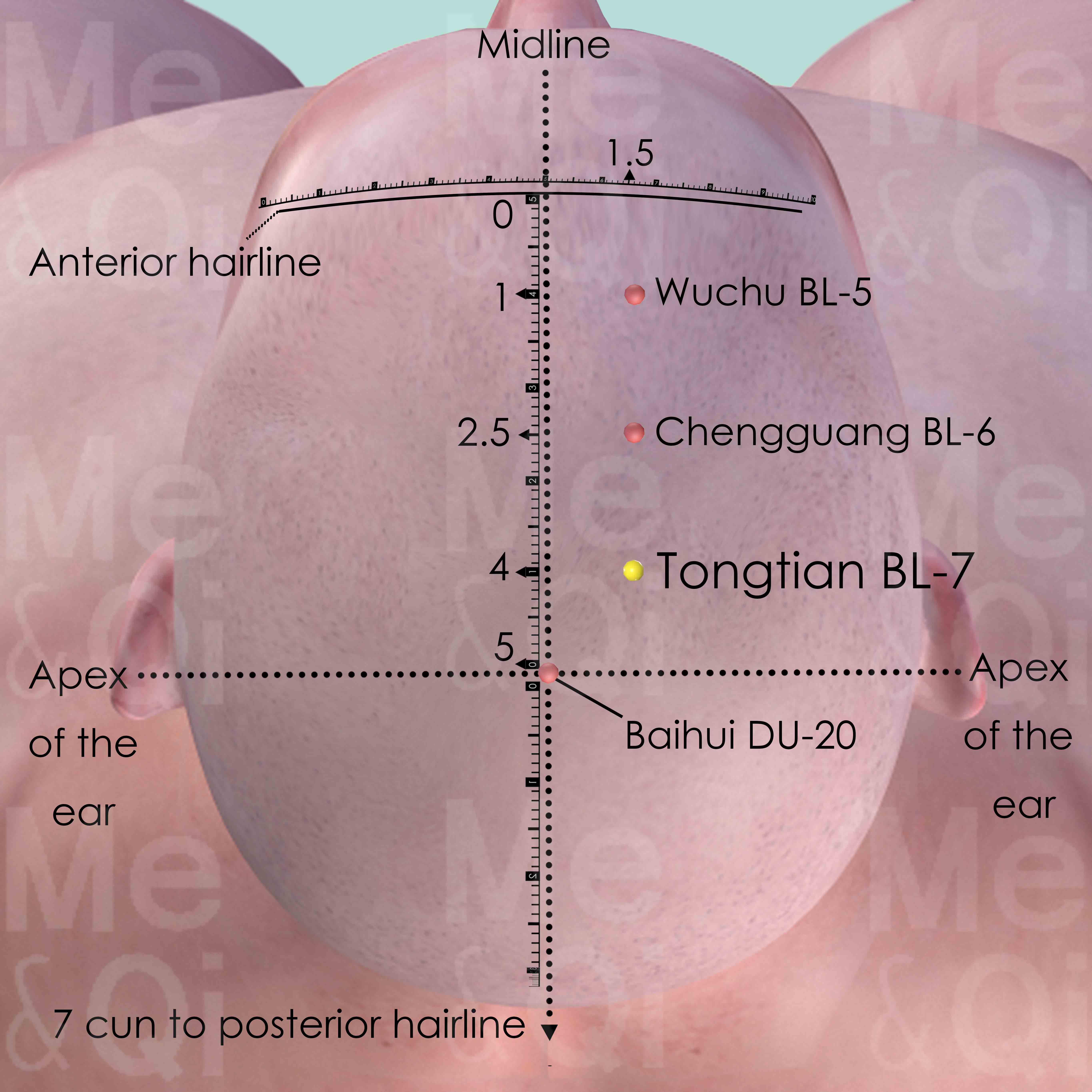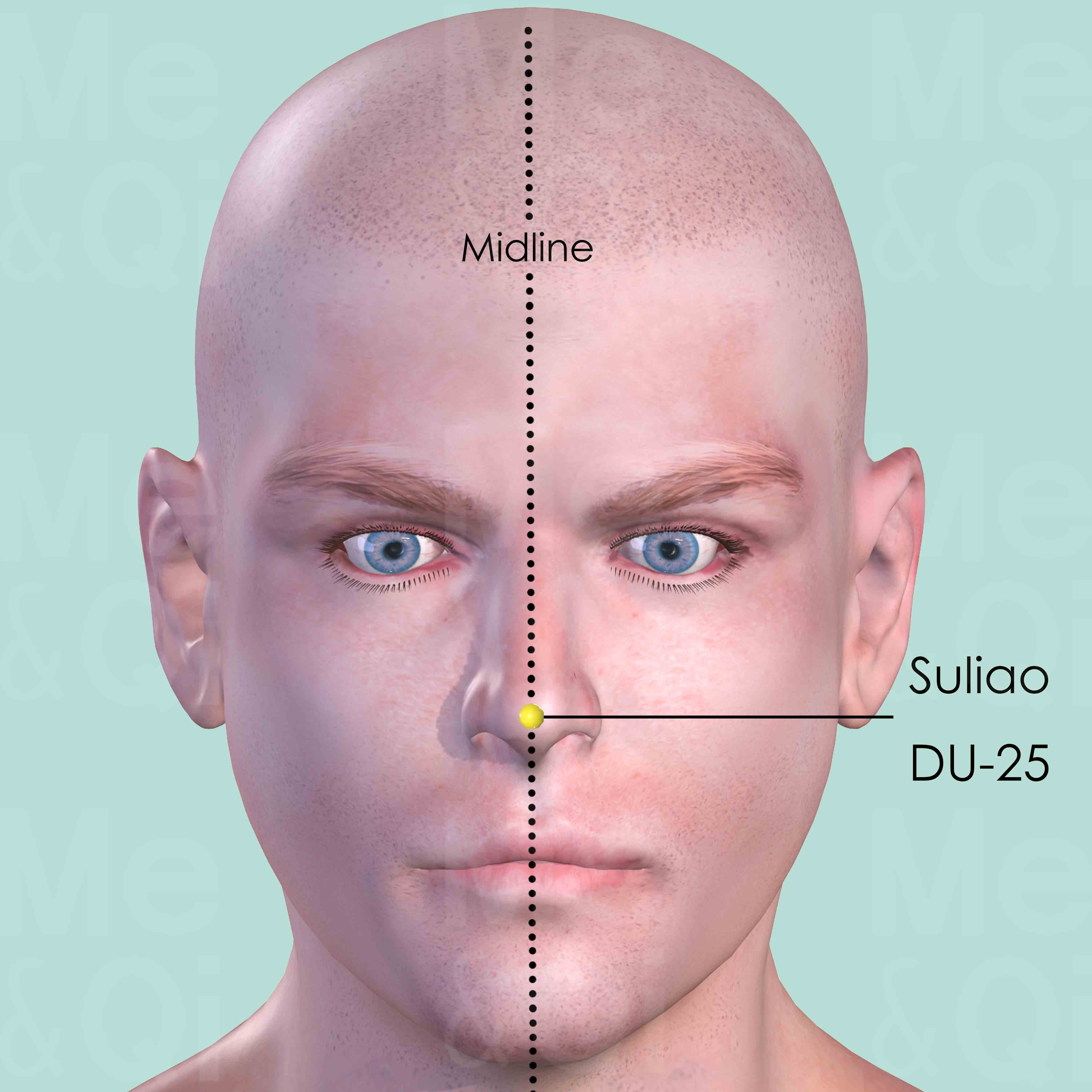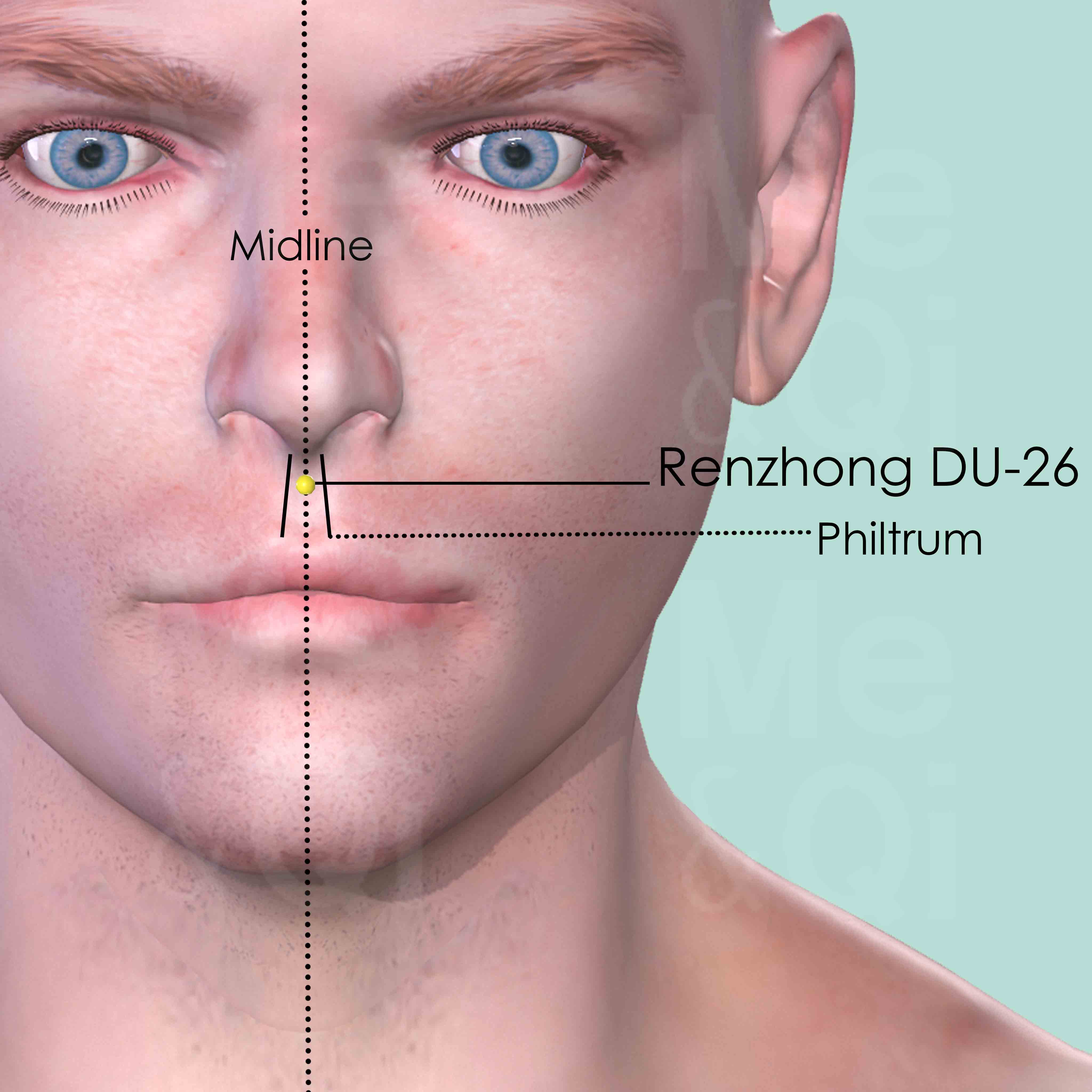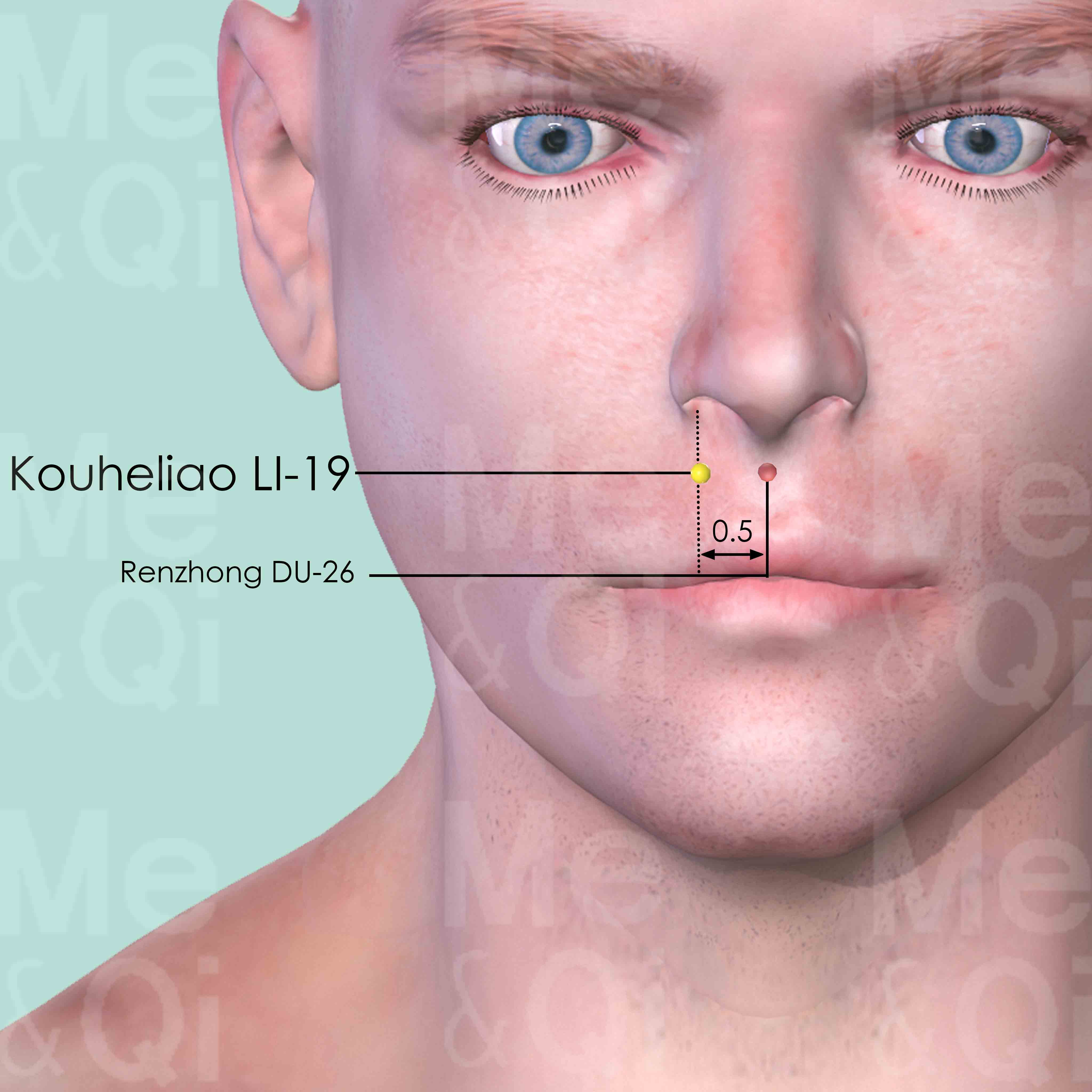Loss Of Smellaccording to TCM
Symptom family: Sensory Disorders
What is Loss of Smell?
Loss of smell, medically termed anosmia, is a condition characterized by the partial or complete inability to detect odors. It can significantly impact a person's quality of life, affecting taste, dietary preferences, and even safety. Anosmia may result from various causes, including nasal congestion from upper respiratory infections, sinus conditions, smoking, or neurological disorders. While often temporary, anosmia can be permanent in some cases, especially when associated with age-related decline or chronic conditions.
How does TCM view Loss of Smell?
Traditional Chinese Medicine (TCM) approaches the loss of smell from a holistic perspective, often attributing it to blockages and imbalances in Qi (vital energy) and the functional integrity of the Zang-Fu organs. In TCM, the symptom is typically associated with pathogenic factors disrupting the flow of Qi in the meridians that connect to the nose. The diagnosis and treatment are tailored to the individual's unique pattern of disharmony, aiming to clear these blockages and restore the sensory functions.
Causes of Loss of Smell According to TCM
In the practice of Traditional Chinese Medicine, many patterns attributs to the loss of smell, such as the invasion of Wind-Cold in the Lungs. This particular disharmony is thought to obstruct the nasal passages, the orifice of the Lungs in TCM, impeding the normal function of smell.
The invasion of Wind-Cold is believed to create a blockage that disrupts the ascent of clear Qi, which is essential for the sense of smell. Treatment in TCM focuses on expelling the Wind-Cold, warming the Lungs, and opening the nasal passages to restore the affected sense.
TCM Herbal Formulas for Loss Of Smell
In treating anosmia, TCM relies on specific formulas to address the underlying imbalances. Xin Yi San, which includes Biond’s Magnolia Flowers, is commonly used to expel Wind-Cold from the Lungs, alleviating nasal congestion and restoring the sense of smell. Each herbal prescription is carefully composed to match the patient's diagnosed pattern, ensuring a targeted and effective approach to treatment.
See more details below about Xin Yi San, a herbal formula used to address loss of smell.
- By Formula Type
- Formulas that dredge and disperse external wind
Formulas that dredge and disperse External Wind
Loss of smell can be treated by these formulas when it results from external wind invasion disrupting the body's surface and normal function, requiring wind-dispersing actions.
One such formula is Xin Yi San, with biond’s magnolia flowers as a key herb.
Acupoints for Loss Of Smell
TCM also incorporates acupuncture as an integral part of treatment for the loss of smell. Acupoints such as Chengguang BL-6 and Tianzhu BL-10 are selected for their ability to expel Wind-Heat, clear the head, and benefit the nasal passages.
Renzhong DU-26 and Yingxiang LI-20 are specifically targeted to benefit the nose and face, while Lieque LU-7 can help to descend and diffuse Lung Qi, which is essential for the sense of smell. These points are strategically utilized in a TCM regimen, focusing on the restoration of Qi flow and the opening of orifices to recover olfactory function.
Explore below some acupoints used to address loss of smell, organized by meridian.
- By Meridian
- Bladder Channel
- Governing Vessel
- Large Intestine Channel
- Lung Channel
- Triple Burner Channel
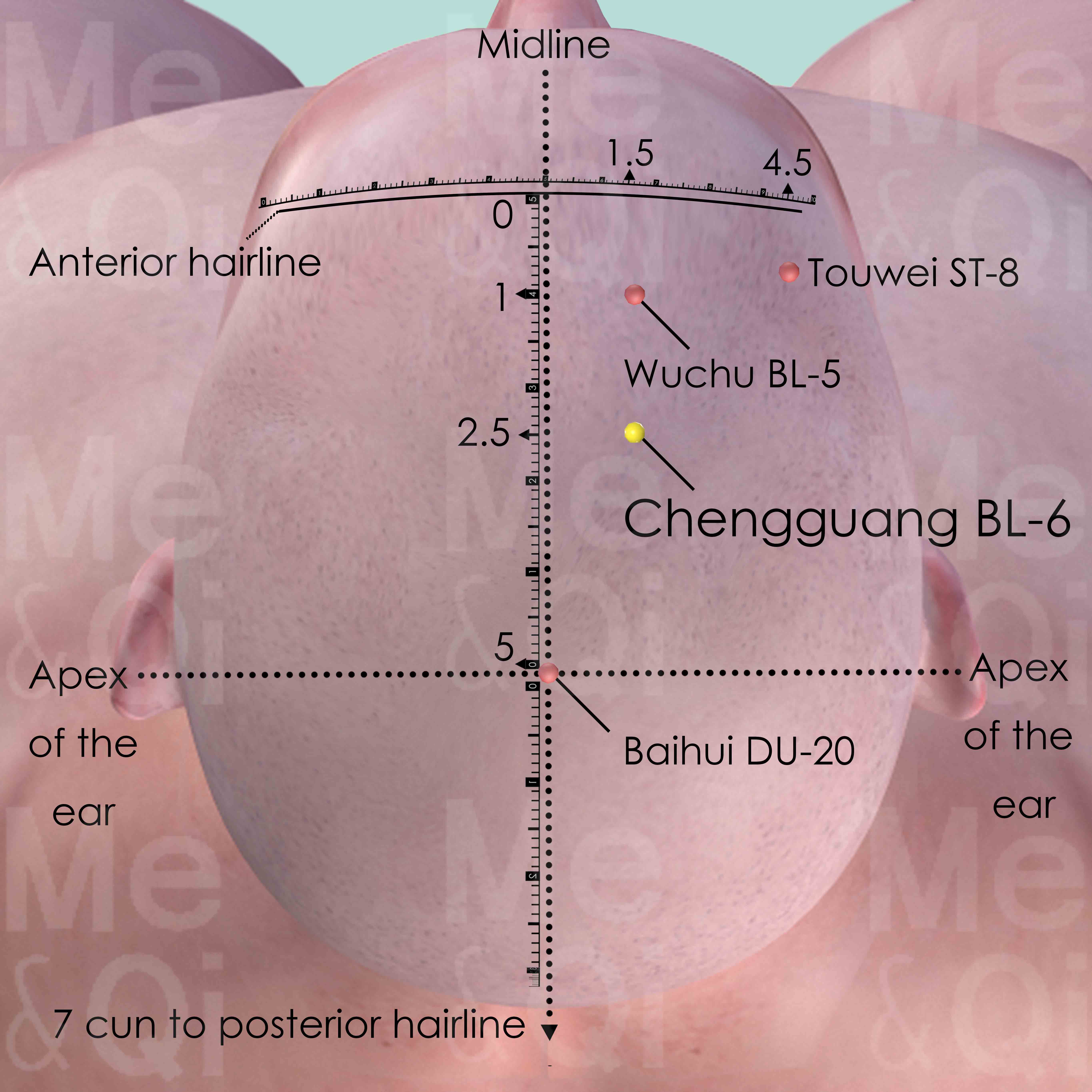
Chengguang BL-6
1.5 cun lateral to the anterior midline and 2.5 cun within the anterior hairline. On the other hand, this point is at the medial third and lateral two-thirds of the distance from anterior midline to the line vertically from Touwei ST-8. Chengguang BL-6 is also 1.5 cun posterior to Wuchu BL-5.
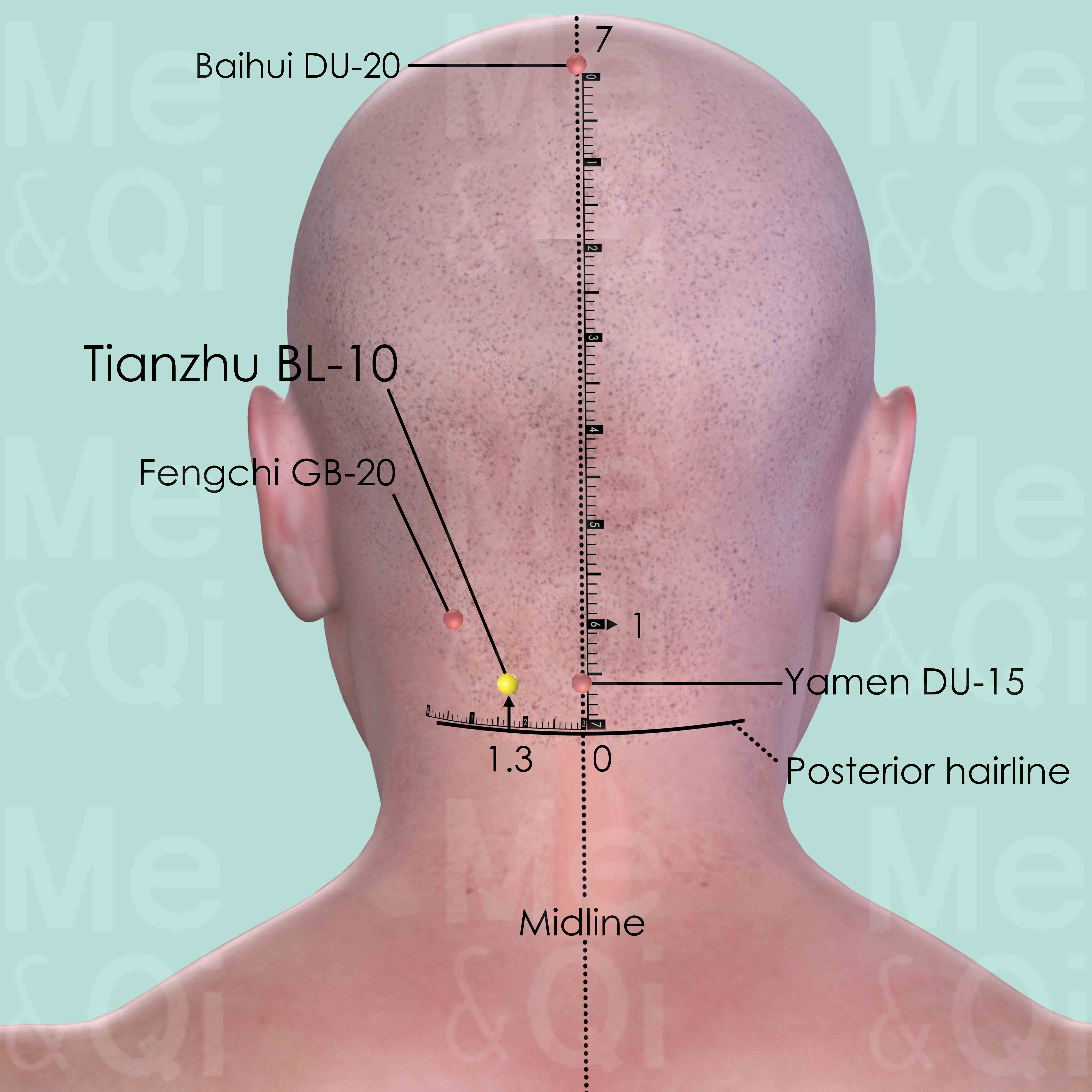
Tianzhu BL-10
1.3 cun lateral to Yamen DU-15 on the posterior midline, 0.5 cun above the posterior hairline, on the lateral side of trapezius muscle.
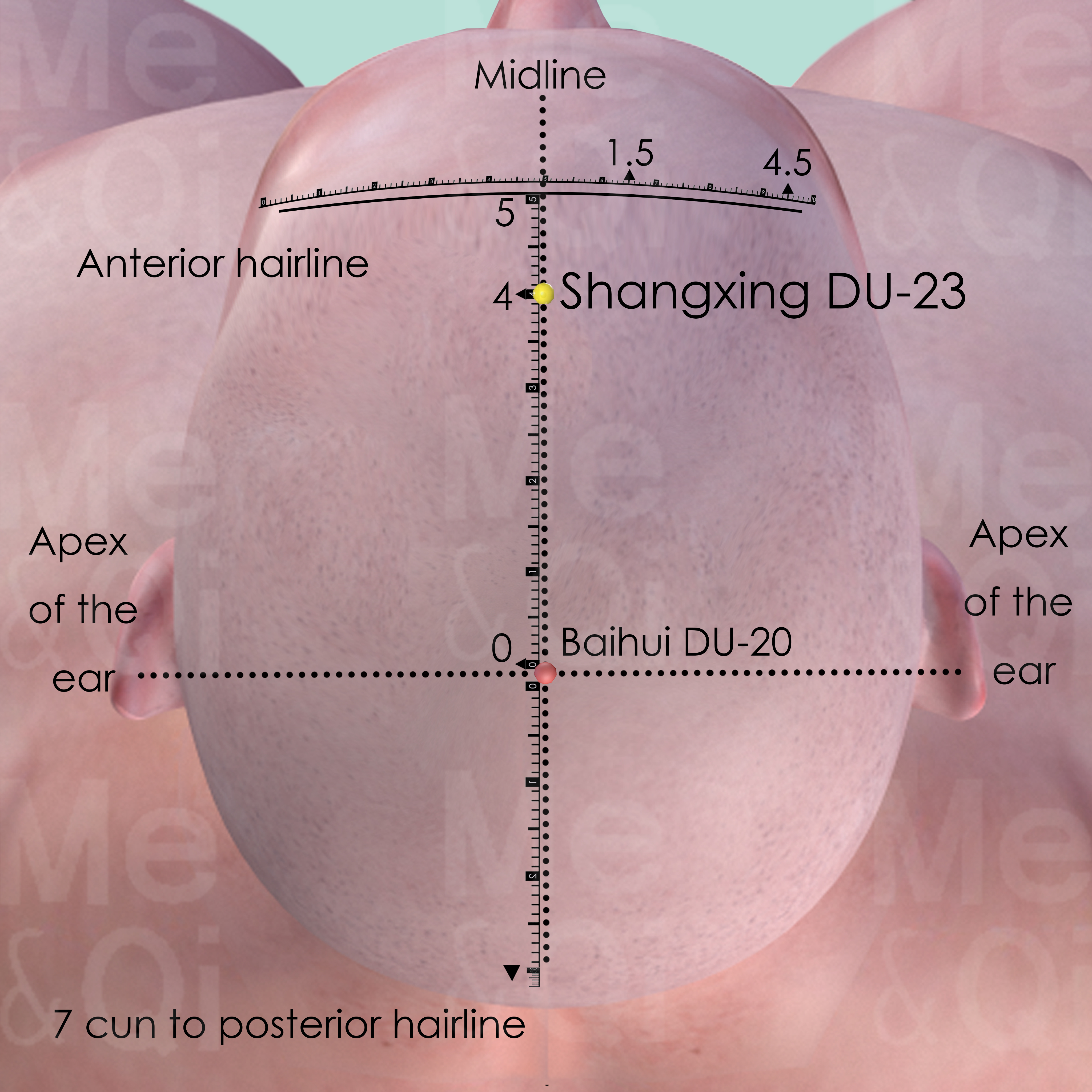
Shangxing DU-23
On the head midline, 1 cun within anterior to the front hairline, 4 cun anterior to Baihui DU-20.
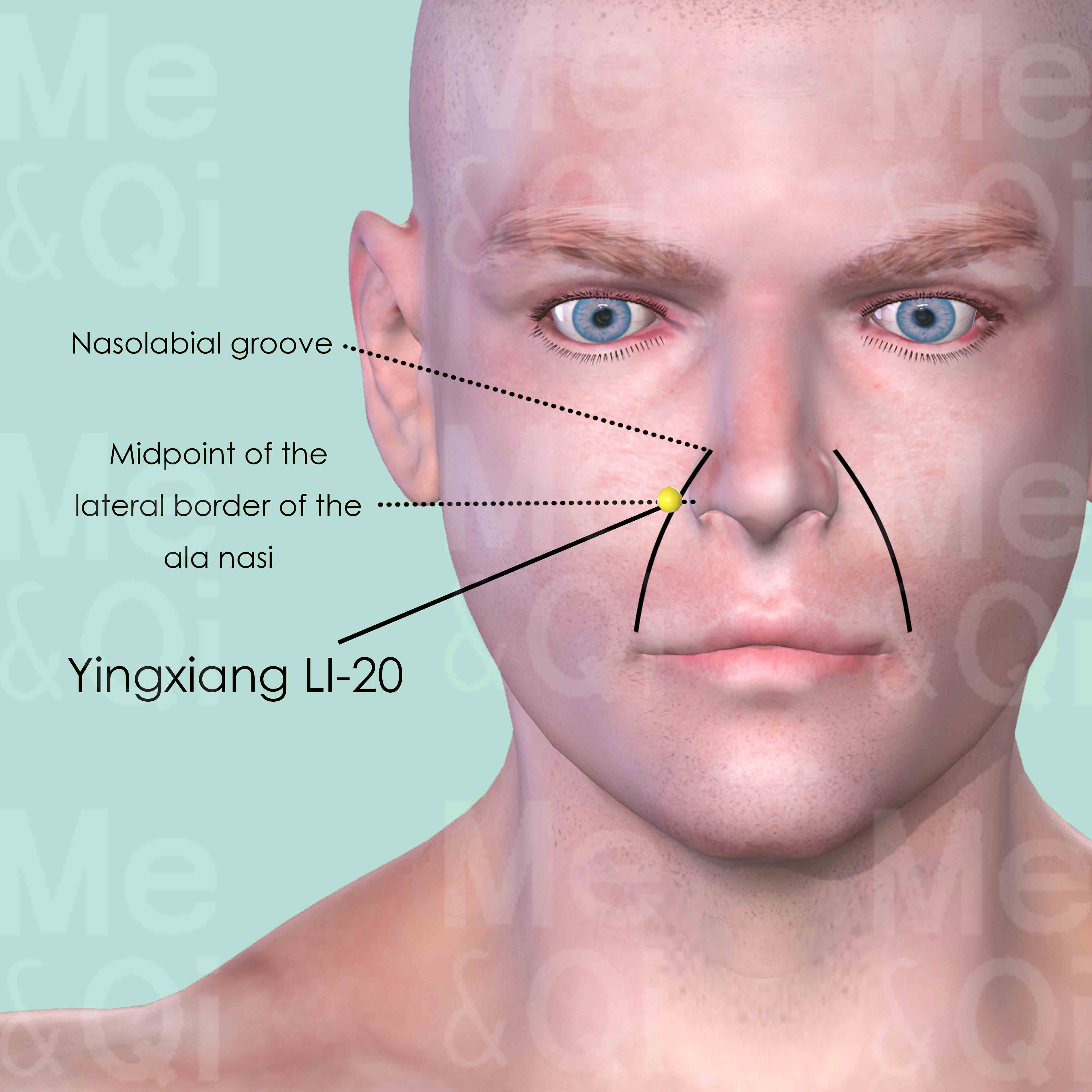
Yingxiang LI-20
In the nasolabrial groove, at the level of the midpoint of the lateral border of ala nasi.
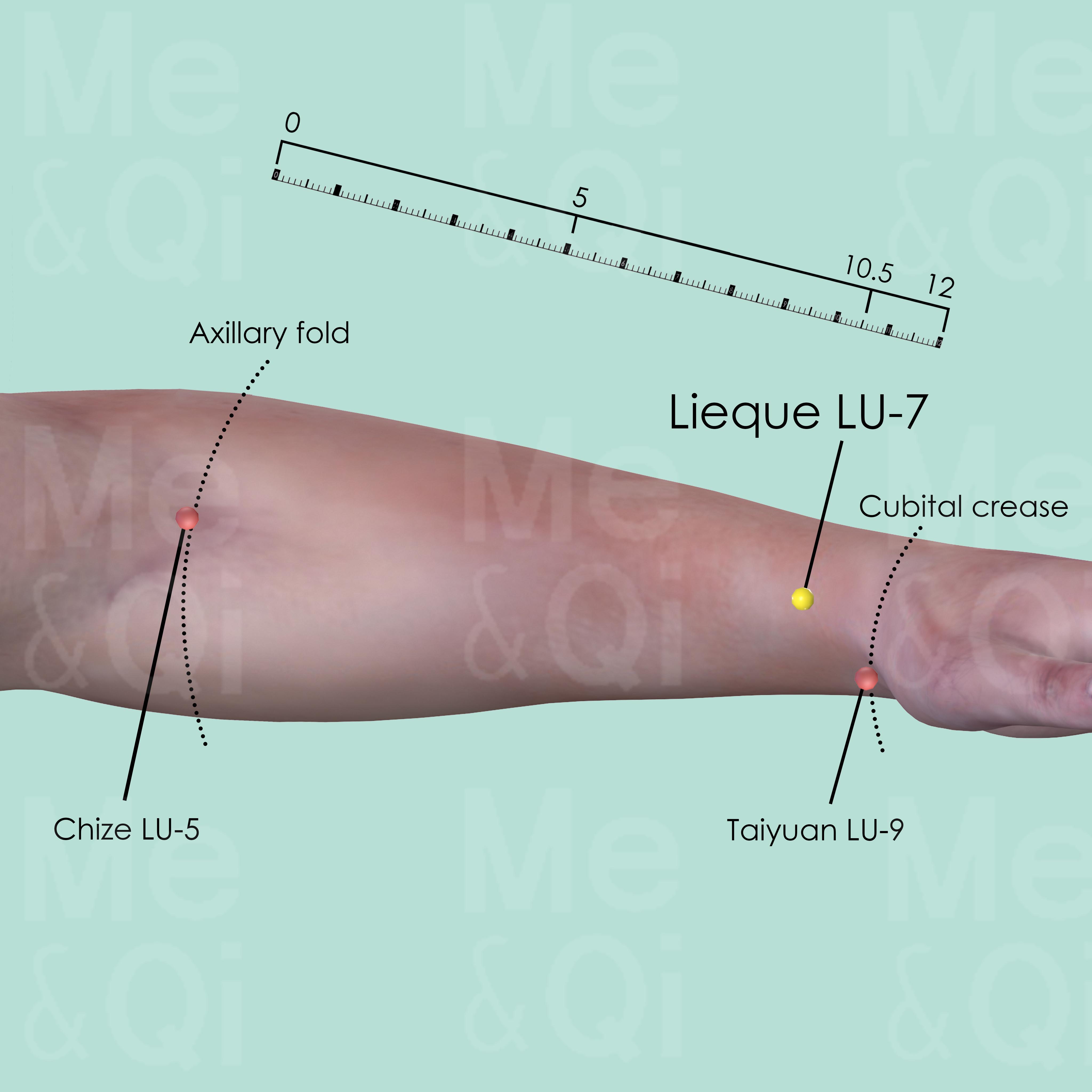
Lieque LU-7
Above the styloid process of the radius, about 1.5 cun proximal to the wrist crease (wrist joint space) in a V-shaped depression.
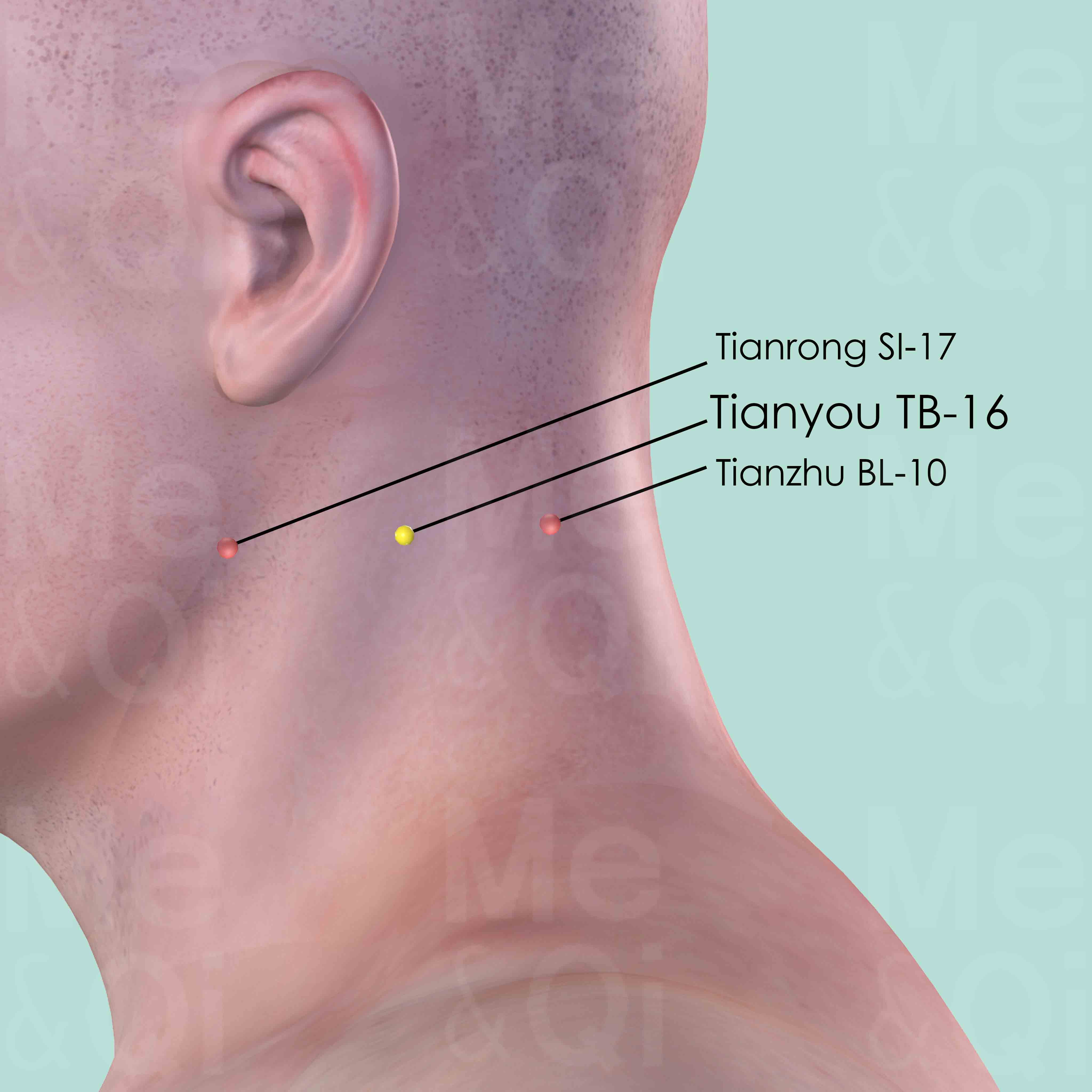
Tianyou TB-16
Posterior and inferior to the mastoid process, on the posterior border of sternocleidomastoid muscle, level with Tianrong SI-17 and Tianzhu BL-10.
TCM Herbs for Loss Of Smell
Explore below some TCM herbs used to address loss of smell, organized by herb category.
- By Herb Category
- Warm/Acrid herbs that release the exterior
- Cool/Acrid herbs that release the exterior
Warm/Acrid herbs that release the Exterior
Loss of smell can be treated by these herbs when there is a need to dispel external cold and warm the body, especially in cases where there is insufficient Yang energy internally.
One such herb is Biond’S Magnolia Flowers (Xin Yi Hua), a key herb in some formulas recommended for loss of smell, like Xin Yi San.
Cool/Acrid herbs that release the Exterior
Loss of smell can be treated by these herbs when the body needs to harmonize with external environmental changes, particularly when there's a need to expel pathogenic factors like wind or cold without overly cooling the body.
One such herb is Bugbane Rhizomes (Sheng Ma), a key herb in some formulas recommended for loss of smell, like Xin Yi San.

